Ostrich Egg Shell Structure That Makes It Nearly Unbreakable
Ostrich eggs are not only the largest bird eggs but also nearly unbreakable due to their unique shel...
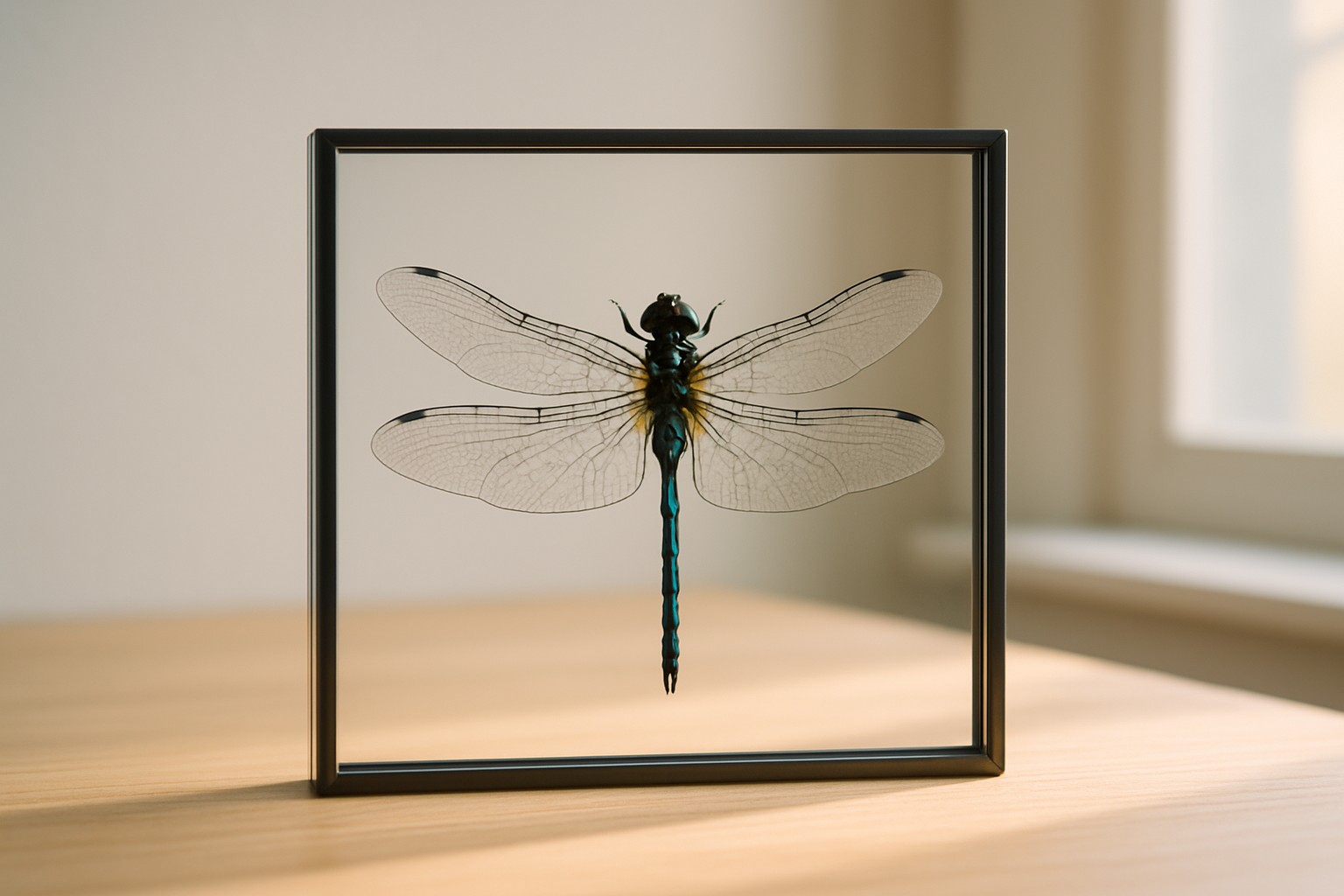
This guide walks you through the art of preserving a dragonfly’s stunning wings and shares careful techniques that make sure your specimen looks as graceful as the day you caught it.
Learning how to preserve a dead dragonfly gives you a wonderful opportunity to really appreciate its delicate beauty and those intricate wing patterns that can easily go unnoticed. These fragile wings are notorious for tearing or crumbling if you’re not extra gentle, so handling with care is absolutely key.
Dragonflies sport these delicate stunning wings made from a thin see-through membrane crisscrossed with a complex web of veins. Their wings are unbelievably light—practically paper-thin—which means they are super easy to tear, fold or crumble if you are not careful. The soft membrane is not toughened and does not stretch at all, so even a tiny bit of pressure can leave a permanent mark. On top of all that the wing joints connecting to the thorax are fragile and demand gentle handling for preservation.
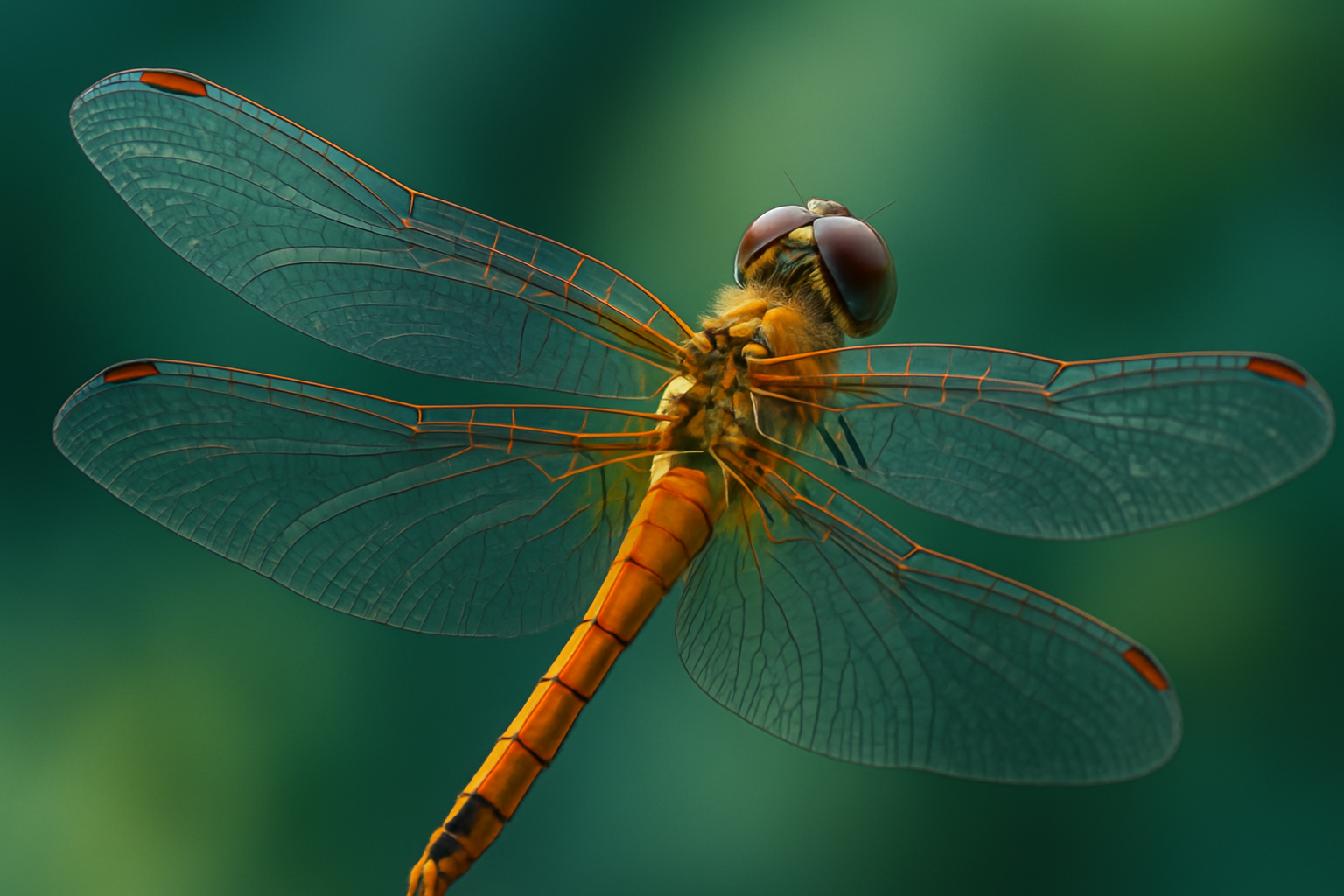
Detailed anatomy of a dragonfly wing highlighting its fragile vein structure and membrane
A common slip-up is grabbing the dragonfly by its wings or using harsh tools that put too much pressure on its fragile parts. It is best to avoid squeezing or bending the specimen at this delicate stage because you might end up with torn wings or worse.
Before preserving a dragonfly it’s vital to dry and clean it gently to keep decay and color loss at bay. Drying is a balancing act—you want to remove all moisture without letting the fragile wings curl like a wilted leaf. Cleaning should be done with care to remove dirt without damaging the delicate wing membranes.
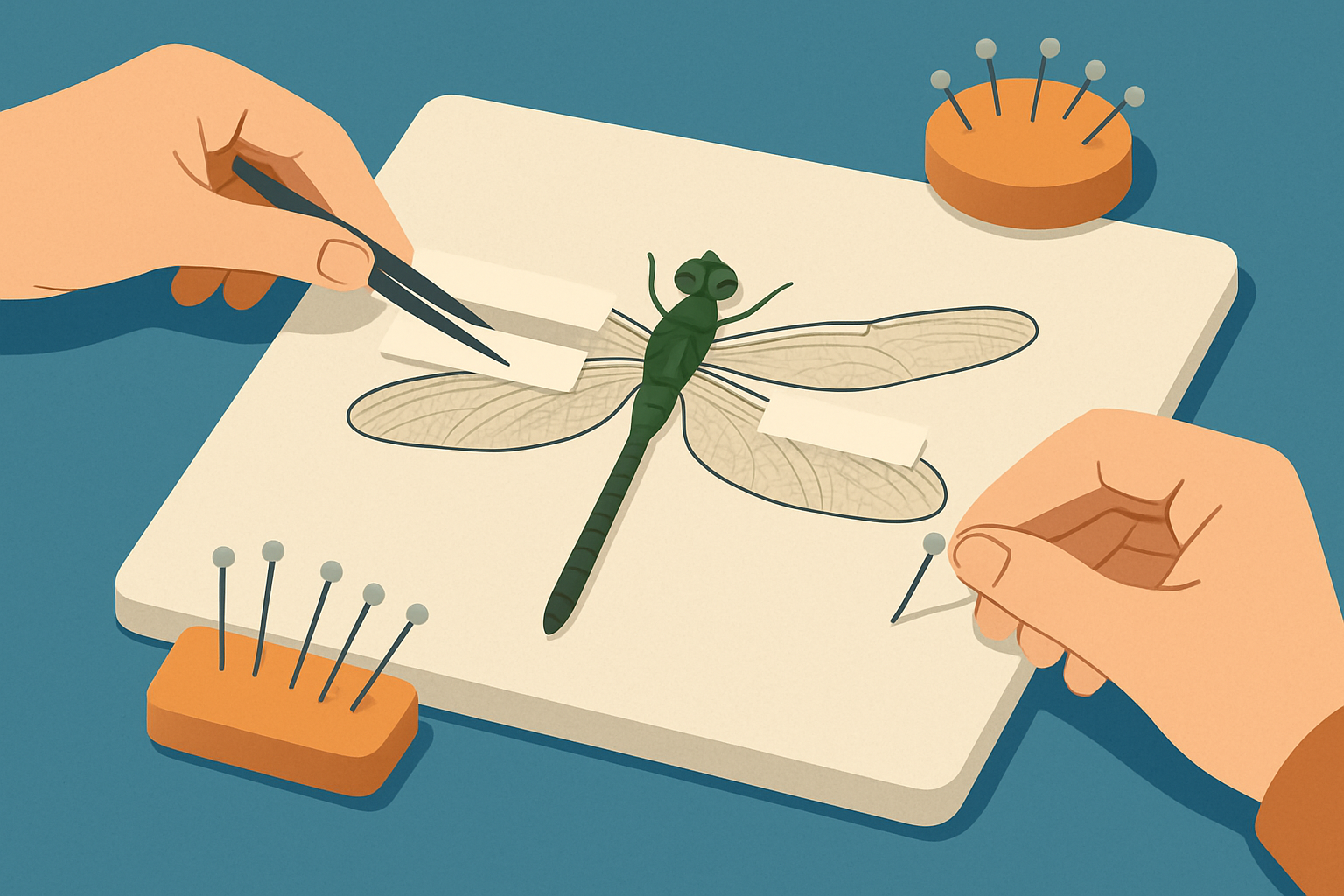
Step-by-step preparation of a dragonfly with wings spread and pinned gently on a board for preservation
| Method | Pros | Cons | Materials Needed | Difficulty | Durability |
|---|---|---|---|---|---|
| Air Drying | Simple and fuss-free, no fancy gear needed | Wings might curl up or lose that vibrant color | Foam board, pins, paper strips | Easy | Moderate |
| Resin Embedding | Provides solid protection and a crystal-clear showcase | Requires some skill and the right equipment to handle resin | Epoxy resin, molds, gloves | Intermediate | Very high |
| Lamination | Fast and effective, keeps wings nicely protected | Permanent finish that could subtly alter the natural look | Laminating sheets, pouch, laminator | Easy | High |
| Freeze Drying | Excellent at locking in shape and color, almost like magic | Expensive and demands specialized gear | Freeze dryer, storage containers | Advanced | Very high |
Air drying combined with light protective coatings usually makes for the easiest approach—nothing fancy just straightforward and reliable. Resin embedding offers better durability and display quality for collectors who want something that stands the test of time but often takes more skill to pull off properly.
Signs of deterioration often sneak up as wing discoloration, brittleness or fungal growth. When you spot discoloration, tuck the specimen away from direct sunlight and keep humidity levels steady because fluctuations are the enemy. If the wings start feeling brittle, treat them like delicate old parchment. Store with moisture-absorbing materials and handle them as little as possible. If mold shows its ugly face, don’t hesitate and quarantine the specimen immediately.
When learning how to preserve a dead dragonfly, remember that if wing damage crops up after collection, those small tears can usually be patched with tiny dots of clear-drying glue carefully applied with a fine brush—kind of like giving your specimen a little TLC. When wings get brittle or start cracking, a gentle humidifying session in a sealed container might bring back some of that lost flexibility. If mold makes an unwelcome appearance, isolate the specimen right away and wipe it down carefully with isopropyl alcohol.
30 posts written
Driven by a passion for historical mysteries, Sterling investigates forgotten stories and overlooked figures, bringing the past to life with meticulous research and vivid prose.
Read Articles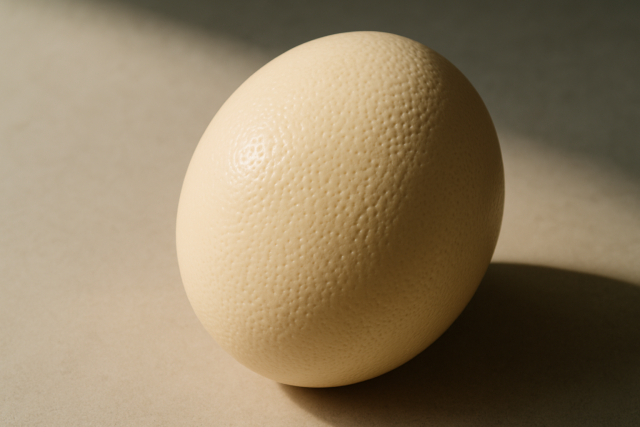
Ostrich eggs are not only the largest bird eggs but also nearly unbreakable due to their unique shel...
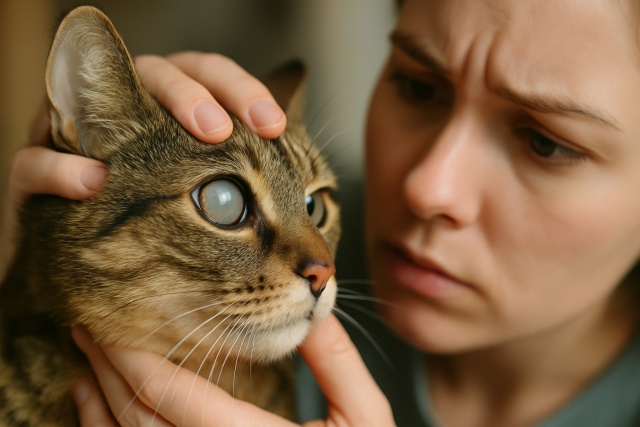
A cloudy eye in cats can signal various health issues. Learn the causes, diagnostic steps, and treat...

Discover the weird stuffed animal trends transforming toy shelves—from hybrid creatures to interacti...
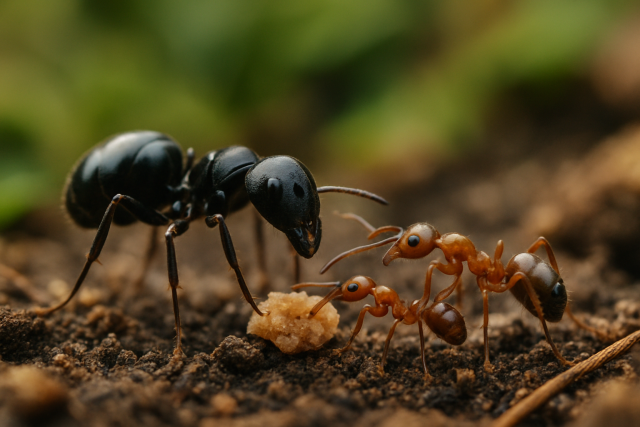
Curious about how long ants live without food? Discover the fascinating biology, survival strategies...
